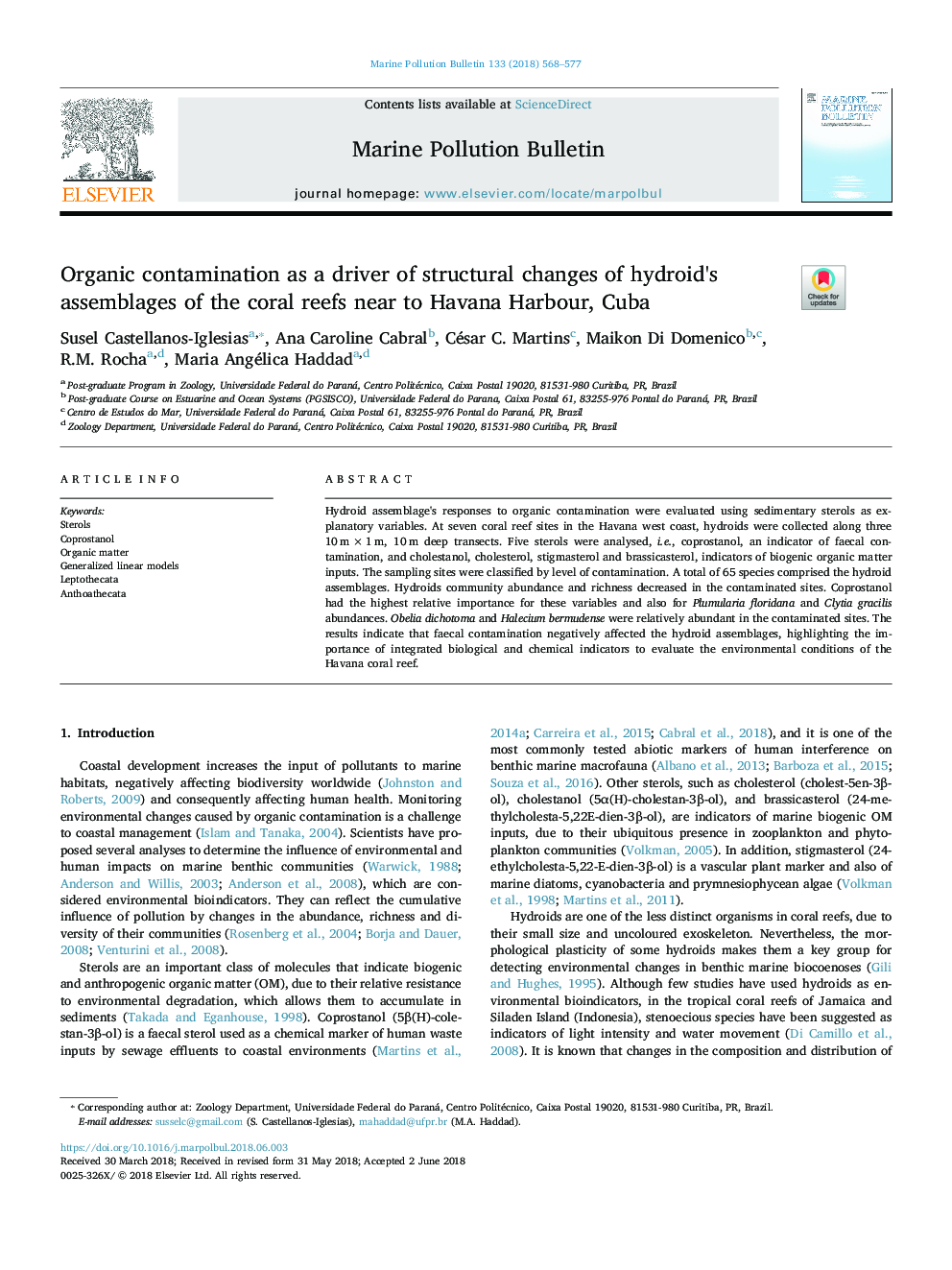| Article ID | Journal | Published Year | Pages | File Type |
|---|---|---|---|---|
| 8871114 | Marine Pollution Bulletin | 2018 | 10 Pages |
Abstract
Hydroid assemblage's responses to organic contamination were evaluated using sedimentary sterols as explanatory variables. At seven coral reef sites in the Havana west coast, hydroids were collected along three 10â¯mâ¯Ãâ¯1â¯m, 10â¯m deep transects. Five sterols were analysed, i.e., coprostanol, an indicator of faecal contamination, and cholestanol, cholesterol, stigmasterol and brassicasterol, indicators of biogenic organic matter inputs. The sampling sites were classified by level of contamination. A total of 65 species comprised the hydroid assemblages. Hydroids community abundance and richness decreased in the contaminated sites. Coprostanol had the highest relative importance for these variables and also for Plumularia floridana and Clytia gracilis abundances. Obelia dichotoma and Halecium bermudense were relatively abundant in the contaminated sites. The results indicate that faecal contamination negatively affected the hydroid assemblages, highlighting the importance of integrated biological and chemical indicators to evaluate the environmental conditions of the Havana coral reef.
Related Topics
Physical Sciences and Engineering
Earth and Planetary Sciences
Oceanography
Authors
Susel Castellanos-Iglesias, Ana Caroline Cabral, César C. Martins, Maikon Di Domenico, R.M. Rocha, Maria Angélica Haddad,
